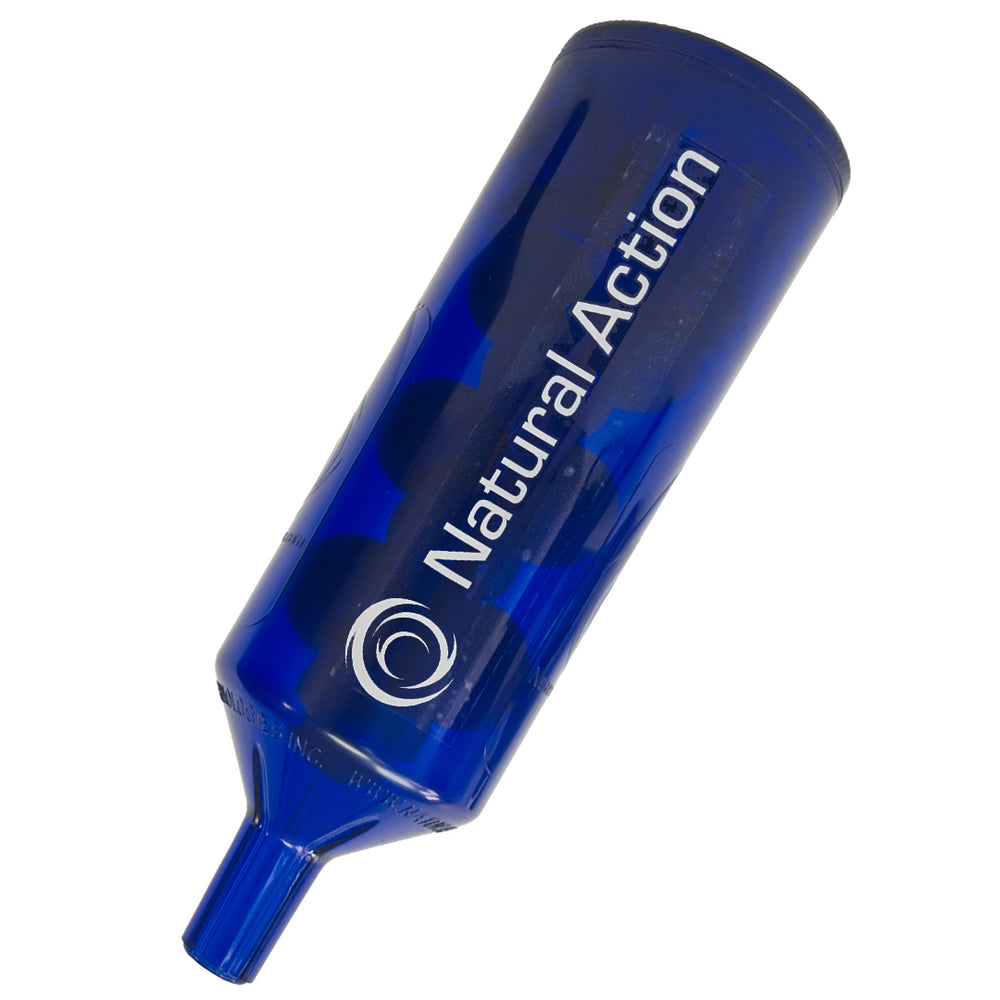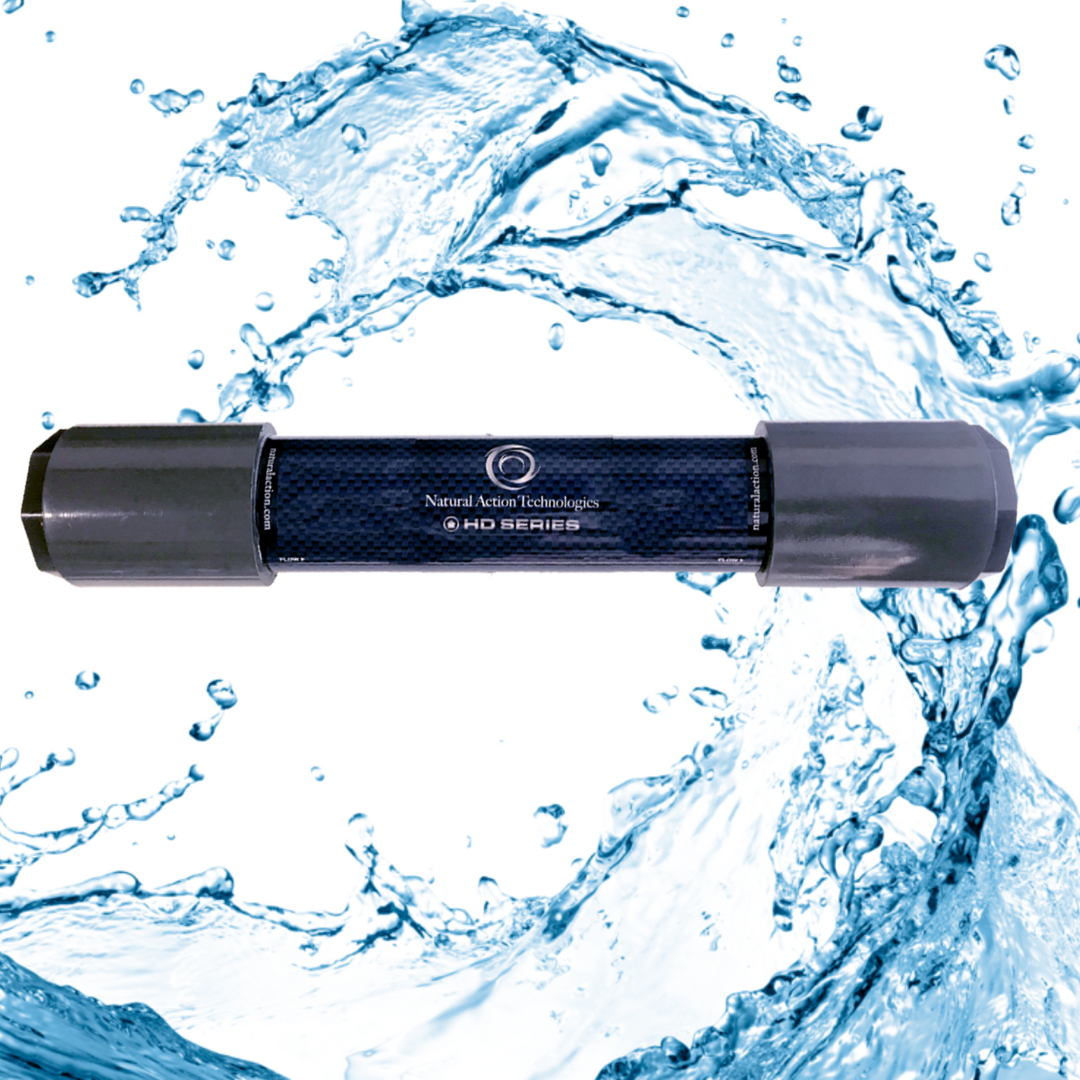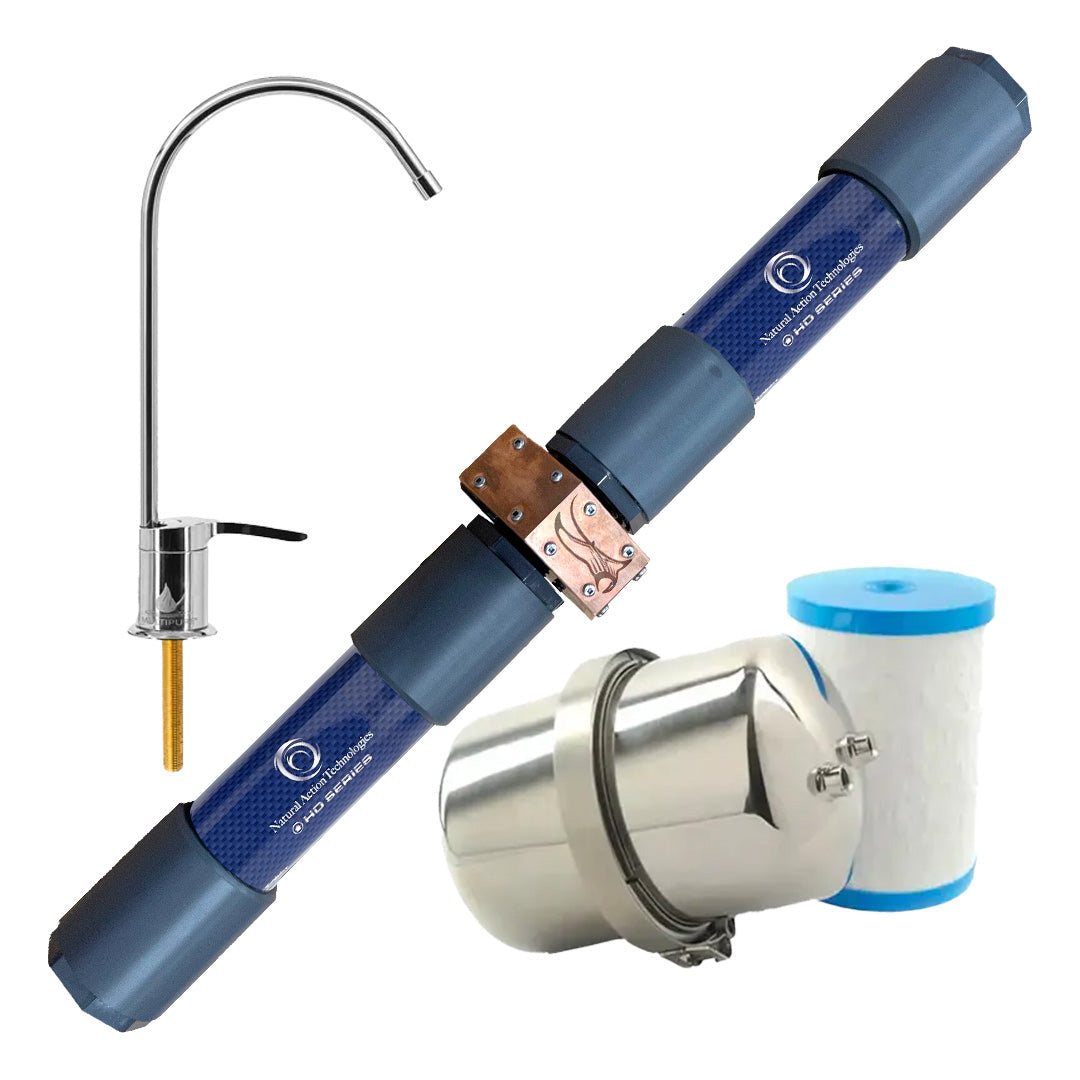When you decide to invest in better water for your home, you face a critical choice: should you focus on purity or organization?
Most people immediately think of traditional water filters—reverse osmosis, carbon blocks, or pitchers—as the ultimate solution. These devices are excellent at stripping out contaminants. But they are only solving half the problem.
The true cost of hydration isn't just the price tag; it's about the long-term investment in your health and the hidden operational costs of your system. Here’s a detailed breakdown of how Structured Water Units compare to traditional filters, and why the "cheaper" option may cost you more in the long run.
1. Purity vs. Organization: Understanding the Core Difference
The biggest hurdle in the water quality conversation is mistaking purity for vitality.
Traditional Filters: The Purity Solution
- Goal: To remove, reduce, or exclude foreign substances.
- Mechanism: Uses physical barriers (membranes, carbon) to trap chemicals (chlorine, pesticides), heavy metals, and sediment.
- Result: Clean Water. The water is free from unwanted pollutants, significantly improving taste and safety.
- The Problem: The aggressive filtering process often leaves the water molecularly disordered and energetically "dead." Your body still has to expend energy to reorganize this water into the bio-available state before it can be used by your cells.
Structured Water Units: The Organization Solution
- Goal: To reorganize the water's molecular structure back into its natural, high-energy state.
- Mechanism: Uses passive, geometric vortex technology to mimic the powerful swirling movement of natural springs or rivers.
- Result: ReVitalized Water. The water retains its healthful minerals but gains enhanced bio-availability, improved absorption, and increased energetic charge (the Exclusion Zone, or EZ).
- The Problem: Structuring units are not filters. While they can neutralize the energetic signature of contaminants, they should be paired with a basic filtration system if your source water is chemically poor.
2. The True Cost Calculation: Beyond the Initial Purchase
The initial cost of a whole-house structured water unit might seem higher than a simple reverse osmosis (RO) system, but the long-term financial comparison tells a completely different story.
MultiPure Aquaversa requires a new filter once a year but does not waste water or use electricity.
Traditional Filter Costs for RO (Hidden Expenses)
|
Cost Category |
(Typical RO System) |
Long-Term Impact |
|
Filter Replacements |
per year (multiple cartridges) |
Non-negotiable annual expense; filters lose efficacy over time. |
|
Water Waste |
RO systems often waste 3-4 gallons of water for every 1 gallon filtered. |
Significant increase in water utility bills over the system's lifetime. |
|
Electricity Use |
Required for booster pumps to push water through membranes. |
Small but ongoing monthly utility cost. |
|
Maintenance & Repairs |
Membranes and pressurized storage tanks can require periodic flushing or replacement. |
Adds to the system's complexity and overall cost of ownership. |
Natural Action Structured Water Unit Costs (Lifetime Investment)
|
Cost Category |
(Natural Action Unit) |
Long-Term Impact |
|
Filter Replacements |
No Filter |
Zero annual replacement costs. The unit uses geometry, not filtration media. |
|
Water Waste |
No Waste |
No moving parts or membranes, meaning zero water waste. |
|
Electricity Use |
No Electricity |
No power required. The process is completely passive and natural. |
|
Maintenance & Repairs |
No Maintenance |
The physical unit is designed for decades of use with virtually no maintenance. |
3. The Wellness Dividend: The Return on Investment (ROI)
When you choose structured water, the return is not just financial; it's rooted in the cellular efficiency of your hydration.
|
Benefit Focus |
Structured Water Advantage |
Financial/Wellness ROI |
|
Cellular Efficiency |
Provides bio-available water. |
Your body saves the energy it would otherwise spend organizing bulk water, leading to perceived higher energy levels. |
|
System Longevity |
Units last for decades without replacement. |
One-time purchase protects against inflation and rising maintenance costs. |
|
Home & Garden |
Better irrigation, less scale buildup in pipes. |
Protects plumbing and boosts health, saving on repairs. |
Making the Right Choice
If you require heavy-duty contaminant removal for extremely poor water sources, a quality filter system is essential. However, the most complete, long-term solution is to combine basic filtration with a structuring unit.
This strategy gives you the best of both worlds:
- Purity (Filter removes contaminants)
- Vitality (Structurer optimizes the for your health)
Don't settle for water that is merely clean. Invest in water that is energetic, organized, and truly hydrating.
Related Reads in the Blog:
- What is Structured Water? Demystifying the 4th Phase of Water (and Why It Matters)
- The Link Between Water Quality and Gut Health: Why Filtering Isn't Enough












